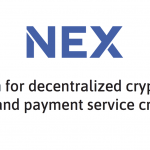Gridcoin securely rewards volunteer computing performed upon the BOINC platform. BOINC offers computing power to whitelisted reseachers for FREE.
PROJECT OVERVIEW.
Gridcoin rewards individuals for scientific contributions and performs transactions peer-to-peer cryptographically - without the need for a central authority to distribute rewards.
BACKGROUND.
Proof-of-Work algorithms have been criticized for wasting energy on meaningless equations in the mining process and for centralizing transaction processing by encouraging a specialized hardware arms race. Gridcoin introduces a Proof-of-Research algorithm that gives computers something productive to do. instead of racing to solve meaningless equations, Gridcoin Researchers work on problems such as finding cures to diseases, mapping genomes, or climate studies, and are compensated for the work they do.
Gridcoin is built on top of BOINC (Berkeley Open Infrastructure for Network Computing), a large network of computing devices. BOINC is not limited to any one program, algorithm, or type of hardware. BOINC supports Windows, Mac OS X, Linux, and Android. You don’t need special hardware to participate and earn rewards for your contributions to research — the computer you use for a few hours every day can contribute to CPU-based scientific projects when you aren’t using it, and you won’t waste electricity competing with GPUs or ASICs for rewards.
Those with special GPU mining rigs can also participate in projects designed specifically for parallel computations and you don’t have to worry about losing your ROI to the next generation of ASICs. There are currently over 30 different projects available, each with its own hardware needs — some need CPUs, some need GPUs, and some need sensors.
The diversity of hardware supported makes it possible to contribute to the network with almost any device, making it more secure and minimizing the centralization of mining power.
HOW IT WORKS.
 Gridcoin securely rewards volunteer computing performed upon the BOINC platform. If you require a serious amount of distributed computing power for free, you can easily create a BOINC project and the Gridcoin network can potentially reward your active userbase to help offset their electricity bills and improve userbase retention. It’s really easy to create a BOINC project. From a cold start, you can get a BOINC server running, distribute work units, receive them back and validate them all in about a day.
Gridcoin securely rewards volunteer computing performed upon the BOINC platform. If you require a serious amount of distributed computing power for free, you can easily create a BOINC project and the Gridcoin network can potentially reward your active userbase to help offset their electricity bills and improve userbase retention. It’s really easy to create a BOINC project. From a cold start, you can get a BOINC server running, distribute work units, receive them back and validate them all in about a day.
The reward system is designed to pay miners in the same way as a pay-per-share mining pool, so they are rewarded fairly based on the work they do — not by how fast they can solve a block. Gridcoins are issued in two ways:
- A 1.5% interest on Gridcoins already held.
- In exchange for completing scientific computations on the BOINC network.
INTENDED USE CASES.
Research.
Participating in BOINC projects with your computer will help advance science in areas like cancer research, fighting malaria, curing AIDS, predicting climate change, searching for aliens (SETI) or curing Alzheimer’s.
PROJECT ADVANCEMENTS.
World Community Grid.
World Community Grid distributes millions of small data-based computer-based experiments to thousands of volunteers’ devices. It has enabled scientific breakthroughs in cancer treatment and solar energy research. Research partners have published over 35 articles in peer-reviewed scientific journal based on research conducted on World Community Grid, advancing knowledge in health, poverty and sustainability.
Rosetta@Home.
Determining the 3-dimensional shapes of proteins in research that may ultimately lead to finding cures for some major human diseases. By running the Rosetta program on your computer while you don’t need it you will help speed up and extend research in ways that couldn’t be attempted without your help. You will also be helping efforts at designing new proteins to fight diseases such as HIV, Malaria, Cancer, and Alzheimer’s.
POEM@home.
The project intends to study how protein structure determines protein function, predict a protein’s structure from its amino acid sequence, investigate how proteins interact with each other and understand how malfunctioning proteins can cause sickness. The resulting knowledge can then be used in the development of medical treatments.
And many more…
GRIDCOIN (GRC).
Gridcoin is an open source cryptocurrency (Ticker: GRC) which securely rewards volunteer computing performed upon the BOINC platform in a decentralized manner on top of proof of stake.
Value of coin.
- The goal of the Gridcoin project all along was to hopefully encourage people to contribute to BOINC in exchange for GRC.
- For volunteers who have been running BOINC projects, the cost of electric can be offset by Gridcoin.
- Gridcoins are worth at least as much as the electricity used for research payments, and the value of the computations the team has contributed to BOINC.
- Supply of coins is not limited, but the rate of generation is limited through network difficulty.
- Gridcoins themselves have no use other than 1.5% interest rate.
How to increase Gridcoin value
Creating a new system where researchers buy some Gridcoins to create a project and pay others for doing their computations may be a low budget option to get some research done or to at least get started. That is the way value can be created and a real demand for Gridcoins can be generated.
If they become a mean of payment for scientific computation, they will be out there on the market following the rules of supply and demand and they will find their value. Both sides will be able to profit. Researchers get their work done and Gridcoin miners and Boinc users will get their money for the work they do. This should increase the value of GRC in the future and thereby increase the number of users dramatically, which, in return, would increase the value again.
Exchanges.
- Poloniex.
- C-Cex.
- Openledger.
- Bitshares-Light.
- Bittrex.
Wallets.
- CoinVault.
- Coinomi.
COMPETORS.
CureCoin leverages Stanford University’s Folding at Home DCN and Proof of Stake (PoS) security model whereas Gridcoin leverages Berkeley Open Infrastructure for Network Computing with a Proof of Research (PoR) security model.
While Gridcoin participants can select from a broad scope of scientific projects (up to 30) from the BOINC network (ranging from Protein Folding, SETI, Collatz Conjecture Mathematics, etc), CureCoin exclusively hosts Protein Folding due to a GPU-centric model of Folding at Home DCN (F@H has peaked at over 100,000 TeraFLOPS - the world’s fastest DCN per day as of this writing).
Gridcoin started trading in Feb 2015 ($0.002262) and currently trades at $0.031878, while Curecoin started trading in May 2014 ($0.798563) and currently trades at $0.223967.
Folding coin is a reward system for distributed computing. Folding Coin is rewarded by a point system based on how much distributed computing power you have donated to the project. You may compute for any of the various protein folding projects under the Folding@Home umbrella. It is easy to install and a simple way to distribute a cryptocurrency for a positive use of electrical energy. Instead of just hashes you are producing viable data for Stanford.
Gridcoin started trading in Sept 2016 ($0.000071) and currently trades at $0.009681.
Rewards you to find prime numbers which will help some future scientist/mathematician make some new discovery.
Golem, iEx, SONM.
Other supercomputers like The Golem Network have a different motivation; Golem is a decentralized sharing economy of computing power, where anyone can make money ‘renting’ out their computing power or developing & selling software. Anyone will be able to use Golem to compute (almost) any program you can think of, from rendering to research to running websites, in a completely decentralized & inexpensive way.
- The Golem application registry can run countless types of decentralized microservices and DApps, which anyone will be able to develop and share (for a profit, if they wish).
- From stock market predictions to big data analysis, Golem can speed up business computation while lowering costs.
- Golem can run the world’s first and largest fully decentralized cryptocurrency mining pools.
Golem started trading in Nov 2016 ($0.0150510) and currently trades at $002262.
What’s the difference between GRC and its competors?
The key difference between those tokens and the GRC coin is that Gridcoin is built on top of an established research platform with coming up on two decades of development.
GRC’s platform is freely accessible while Golem, iEx, SONM etc are rented/paid for.
MARKET.
- There is a growing demand for computing power from industries and scientific communities to run large applications and process huge volumes of data. There are several domains, such as product simulation, deep learning and 3D rendering, where demand for expensive computing resources and High-Performance Computing (HPC) is rising.
- For a lot of smaller research institutes or businesses it is a very expensive matter to set up their own computing units for the research they are doing or the service they are providing.






















